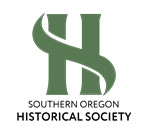The Salmon River in Siskiyou County, Calif., earned a reputation during the California Gold Rush as “the richest little river in America.” Mining continued in the Salmon and other Northern California rivers after much of the Sierra Mother Lode had played out.
Every mile of the Salmon River yielded gold by almost every sort of placer mining. One 12-mile stretch of river—from Sawyers Bar, or Eddy Gulch, down to the Forks of Salmon – produced 2 million ounces of gold. In addition, steep and rugged Sawyers Bar within the Salmon River district produced an estimated 16,000 ounces of placer gold and 20,000 ounces of lode gold from 1855 to 1965. Sawyers Bar contains roughly 800 square miles of extremely mountainous country between the Marble Mountains and Salmon and Trinity Wilderness Areas.
A company located at 7,200-feet elevation on Trail Creek within the Callahan district claimed an ore reserve of 3,000 tons of rock. It built a 2-foot-wide, 300-foot long ore-shoot to access the ore. Running 70 days a year, the company produced $40,000 worth of gold through 1912.
Sources: "Area Gold Production History." The Claim Post. theclaimpost@comcast.net, 2003. Web. 17 May 2016. http://theclaimpost.homestead.com/SALMONRIVERGOLDHISTORYAREAATTRACTIONS.... ; "Gold Districts of California Bulletin 193 California Division of Mines and Geology 1976." Gold Districts of California. Western Mining History, 2016. Web. 17 May 2016. < http://www.westernmininghistory.com/articles/421/page1 >.
The SOHS Library is OPEN to the public at 106 N. Central Avenue in Medford, with FREE access to the SOHS Archives, from 12:00 - 4:00 pm, Tuesday through Saturday. Appointments are not necessary. Please contact library@sohs.org, or call 541-622-2025 ex 200 to ask questions or request research.
Salmon Becomes “Richest Little River in America”
Episode
2957
Date
